STUNNING RED CRESTED POCHARDS @ RSPB TITCHWELL MARSH
- Jonathan Marshall
- Apr 10, 2019
- 10 min read

On day two of my trip to Norfolk I visited the RSPB's Titchwell Marsh Reserve which is located between the villages of Titchwell and Thornham just five miles east of Hunstanton. The Reserve's habitats include reedbeds, salt marshes, freshwater lagoon, sandy beach and a small woodland area near to the car park. Titchwell Marsh is part of the North Norfolk Coast Site of Special Scientific Interest (SSSI) and is an important site for scarce breeding birds such as Bitterns, Avocets, Marsh Harriers and Bearded Tits.
The reserve is also home to wetland birds such as the Water Rail, Sedge Warbler, Reed Warbler and Little Egrets. Geese and Ducks winter at the reserve in large numbers and Titchwell is very important for migrating birds during Spring and Autumn and regularly attracts rarities. On the reserve there are four hides, five trails, cafe and visitor centre and the reserve is free to RSPB members but non-members have to buy a car park ticket for the day. The five trails are the Meadow trail, Fen trail, East trail, West Bank path and Autumn trail, although the Autumn trail is only open from August to October.
During both World War One and World War Two the site was heavily used by the military and remains from both World Wars are still visible. Brickwork from a First World War military hospital and 1940's artillery targets for armoured fighting vehicles and warplanes in the Second World War can be seen. Immediately west of Titchwell Marsh is Thornham Marsh and from 1914 to 1918 it was used as a bombing range by the Royal Flying Corps. There is also some brickwork remaining from a First World War military hospital and a First World War building on the West Bank was used as a holiday let until 1942 when the army returned.
During the Second World War military defences were built at Titchwell Marsh and between 1942 and 1945 it was used by the Royal Tank Regiment. An armoured fighting vehicle gunnery range was established and new banks were constructed for firing practice. Titchwell Marsh was still used for military activities after the war had ended with the RAF using Thornham Marsh again between 1950 and 1959. The remains of two Second World War Covenanter tanks used as targets are sometimes visible at low tides.
The wreck of the SS Vina, a cargo steamship built in 1894, can be seen at low tide and in 1944 it was being used as a target for the RAF when a gale dragged it to its current location and sank it. The remains are reachable at low tide, but visiting them is very dangerous as it can be very quickly cut off by the incoming tide with a warning sign advising anyone that reaches it to return to the beach immediately. Behind the sea wall the marshes were drained after the war and returned to farmland, but during the North Sea flood of 1953 the bank was breached and the whole area was returned to tidal saltmarsh.

Between 1970 and 1972 a pair of Montagu's Harriers which are Britain's rarest breeding birds of prey, nested in the reedbed at Titchwell Marsh and in 1973 the reserve was bought by the RSPB for the sum of £53,000. Sadly the Montagu's Harriers did not return but in 1984 Avocets bred here for the first time and the RSPB has been improving the habitat and facilities, embanking the lagoons and building a visitor centre and car park with the visitor centre facilities being upgraded between 1987 and 1989 to cope with the number of visitors.
In 1991 the sea broke through the dunes at the eastern end of the beach near the former Tern hide and this caused the dunes to start eroding. The remains of the two Second World War tanks first appeared at this time. The following year the boardwalk at the beach end of the West Bank was built to protect the dunes. In 1993 thirty acres of land to the east of the reserve was bought with much of this being the old firing range used by the army. Large amounts of barbed wire caused problems when converting the area to reedbed and wet grazing meadow.
In February of 1996 storms demolished most of the sand dunes east of the boardwalk and eroded those to the west leading to the Tern hide being cut off at high tide and as a result it was dismantled. In 1997 a cafe was added to the visitor centre and the Fen hide was erected alongside a boardwalk that leads to the hide. Titchwell Marsh is one of the RSPB's most visited sites and is right next to the A149 road with buses stopping right outside the reserve. The main track is a public right of way and is the only part of the reserve where dogs are permitted. The visitor centre is open every day except Christmas Day & Boxing Day with most of the reserve and its facilities being wheelchair accessible.

Breeding birds at the reserve include Ringed Plovers, Oystercatchers, Water Rails, Sedge Warblers, Reed Warblers, Cetti's Warblers and Little Egrets. During the early part of Summer rare migrants such as the Little Gull, Black Tern, Eurasian Spoonbill and Garganey sometimes pass through to breed at other locations. In the autumn some species arrive from the north such as Black Tailed Godwits, Curlew Sandpipers and Little Stints either staying for winter or using the reserve as a refuelling stop before carrying on.
From 2010 to 2011 the banks on the east and west of the reserve were reinforced, with the sea wall to the north of the fresh marsh being rebuilt on the line of the old Parrinder bank. The Parrinder hide was replaced by two new hides designed by HaysomWardMiller, with the new designs winning an award from RIBA for the architectural style. The former brackish marsh north of the new wall was changed by creating a breach in the east bank to allow tidal flooding and establishment of saltmarsh. The new saltmarsh will protect the rebuilt Parrinder wall and slow erosion.
It was a sunny day with a cold wind when I arrived at 9am and as I got out of the car a Stoat scurried across the road. As I walked across the car park a Robin perched on a branch and as I walked along the path to the visitor centre the Robin followed me, briefly perching on a sign before flying off. The visitor centre was not open until 9:30am so I had a look at the feeders near the entrance. There were Chaffinches, Blue Tits and Great Tits visiting the feeders with Dunnocks and Wood Pigeons on the ground below.

I walked round the visitor centre to the feeders at the back which were being visited by Blue Tits, Great Tits, Goldfinches, Chaffinches and Blackbirds with Moorhens, Pheasants, Stock Doves and a Collared Dove feeding on the ground below. As I walked across to the West Bank Path I saw a Robin sat on a bench and a Wren moving through the bushes. I walked along the path and I could see several Black Headed Gulls and in the distance a pair of Little Egrets.
In the small pool of water to my right I could see a pair of Tufted Ducks and a lone Greylag Goose. A little further along the path split in two with the left hand path continuing on towards the sea and the right hand path descending down the embankment to the Island Hide. From here I could see Black Headed Gulls, Coots, Mallards, Tufted Ducks, Greylag Geese, Brent Geese and Avocets. A few minutes later I spotted a Marsh Harrier flying low over the reeds, going back and forth over the reeds looking for food before dropping down into the reedbed.
I left the hide and returned to the path and continued along the West Bank Path towards the sea and to my left I could see Oystercatchers and Shelducks as a Redshank flew overhead and landed amongst them. After a further hundred yards or so I arrived at the Parrinder Wall which separates the Freshwater Marsh and the Volunteer Marsh. I turned and walked along the Parrinder Wall where the path is bordered on each side by a high grassy bank which sheltered me from the cold wind.

A little way along the path I could see a group of Avocets in the Freshwater Marsh south of the wall with all but one of them fast asleep with their beaks tucked into their feathers. At the end of the path along the Parrinder Wall there are two hides, one facing south looking over the Freshwater Marsh and the other facing north over the Volunteer Marsh. The hide is divided into two and I sat down in the half facing south west and in front of me there were Teal, Shovelers and Gadwalls with the Avocets now probing the mud beneath the shallow water for food.
On an Island around one hundred yards from me, halfway across the Freshwater Marsh, I could see a group of Sandwich Terns and in the middle of them was a Mediterranean Gull. Further out there were several Shelducks and on an island at the far side I could see a pair of Canada Geese. I got up and went through the door in the dividing wall to the other half of the hide facing south east. In front of the hide I could see yet more Avocets, Shelducks and Shovelers whilst over to the left I could see more than two hundred Black Headed Gulls as well as a couple of Herring Gulls.
Around fifty yards away along the edge of the water I could see a Little Ringed Plover making its way along moving back and forth. I moved across to the Parrinder North hide which looks out over the Volunteer Marsh and the water levels here depend on the tide. The tide was currently right in so the water levels were very high so I decided to return later in the day when the tide was out to see any waders. Out on the water I could see Black Headed Gulls, Shelducks and Greylag Geese with an Oystercatcher flying low over the water.

I left the hide and walked back along the Parrinder Wall and turned to the right and continued along the West Bank Path towards the sea. As I walked out towards the sea Linnets regularly flew overhead as well as Skylarks rising up from the ground to my left. I continued on past the Tidal Marsh to the sea which was quiet apart from a Cormorant flying low over the sea. As I turned round to head back down the path I spotted a Water Pipit making its way along the sand before flying off and landing amongst the bushes close to the water on the Tidal Marsh.
I now walked back along the West Bank Path to the visitor centre and paid a visit to the cafe for lunch. I sat and had my lunch whilst a Pheasant moved back and forth under the feeders and a Bank Vole kept scurrying out from the undergrowth to pinch food dropped from the feeders. After lunch I walked round the visitor centre to the Fen Trail which takes you through some woodland where I saw a Blackcap and a Muntjac Deer before it disappeared into the bushes.
I continued on through the trees as I heard a Chiffchaff singing above and after about two hundred yards I arrived at the Fen Hide. The water in front of the hide was quiet with just two Mallards present but I could hear Blackcaps singing in the bushes nearby. Over the reedbeds a Marsh Harrier appeared flying back and forth over the reeds and trees occasionally swooping low looking for food.
From here I walked the last few yards of the Fen Trail, across a concrete path and onto the East Trail. The East Trail runs along the bottom of Patsy's Reedbed to Willow Wood with a large lagoon close to the path. I walked along the path to a Screen at the western end of the lagoon and from here I could see Mute Swans, Shovelers, Mallards, Little Grebes, Teals and Gadwalls. On the right edge of the water there was a pair of Egyptian Geese and flying overhead I saw a pair of Crows.

There had been sightings of some Red Crested Pochards on the lagoon at Patsy's Reedbed but at the moment there was no sign of them. I walked along the East Trail to the other end of the lagoon and as I reached the far side a trio of Red Crested Pochards emerged from the reedbed and spent the next ten or so minutes at this end of the lagoon. As I started to make my way back along the trail the Red Crested Pochards moved towards the back of the lagoon and disappeared into the reedbeds.
From here I walked back along the Fen Trail but half way along I turned right onto the Meadow Trail which takes you across to the West Bank Path. I reached the West Bank Path and followed the path to the Island Hide where there were several Coots just in front of the hide but not much else so I left the hide and continued along the path along the left hand side of the Freshwater Marsh. There were still several Black Headed Gulls, Shelducks and Avocets to my right as I reached the Parrinder Wall and as I began to walk along the wall a Pied Wagtail flew overhead.
I went into the Parrinder (South) hide first where the Teals, Shovelers, Shelducks and Avocets were still in attendance as were the Sandwich Terns. There were still two or three hundred Black Headed Gulls over to the left and on the far side of the marsh were around a dozen Brent Geese. On an island to my right there were two Little Ringed Plovers chasing each other along the water's edge. I moved over to the Parrinder (North) hide and the water levels were now at their lowest with the tide now almost fully out.

To the left of the hide there were a pair of Redshanks and a lone Curlew whilst further out there was a Black Tailed Godwit. I left the hide and walked back to the West Bank Path and turned right and followed the path up the left hand side of the Volunteer Marsh. On the mud to my right there were a pair of Redshanks and a single Greenshank and near the top left hand corner of the marsh there were a pair of Teals. I continued on past the Tidal Marsh to the beach where the sea was now a long way out. At the water's edge I could see large groups of Oystercatchers, four Turnstones and a single Knot and Dunlin.
It was very cold on the beach due to the wind so I returned to the West Bank Path and followed it back to the Parrinder Wall. I returned to the Parrinder (South) Hide where the Little Ringed Plovers were still chasing each other back and forth along the edge of the water. The Shelducks and Avocets were still very active over to the left of the hide with the Avocet chasing off a Shoveler every time it came too close.
I followed the path right back to the feeders behind the visitor centre where there were a couple Mallards in a pond close to the feeders and a Blackcap and Blue Tit singing away in the trees above. The Mallards now left the pond and waddled across to the feeders as a Long Tailed Tit visited them above. As I walked past the visitor centre to the car to head back to my hotel I saw several Robins and Chaffinches singing from the trees.
I have attached a few photos and a full sightings list from my visit to RSPB Titchwell Marsh.















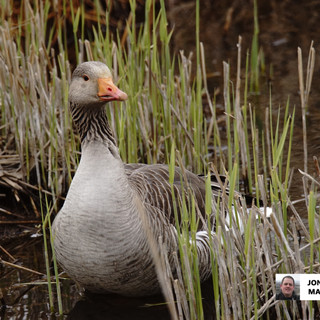



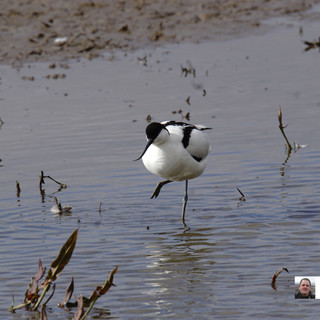

























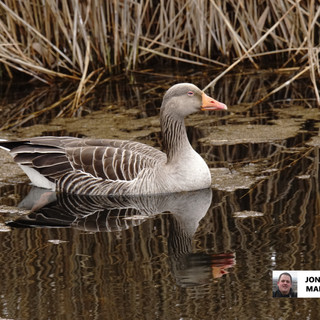







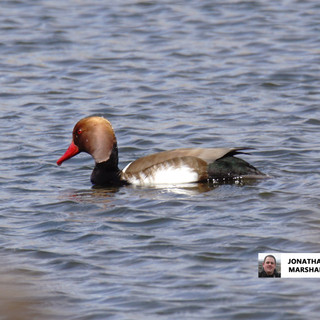





























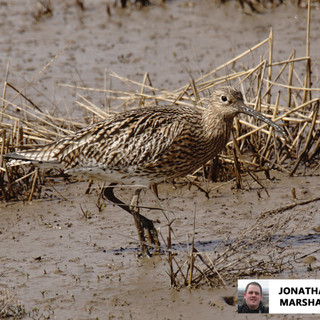





















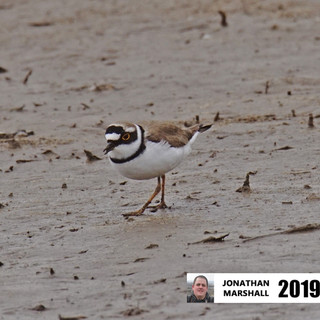











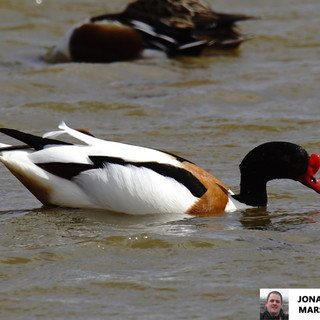


























Comments